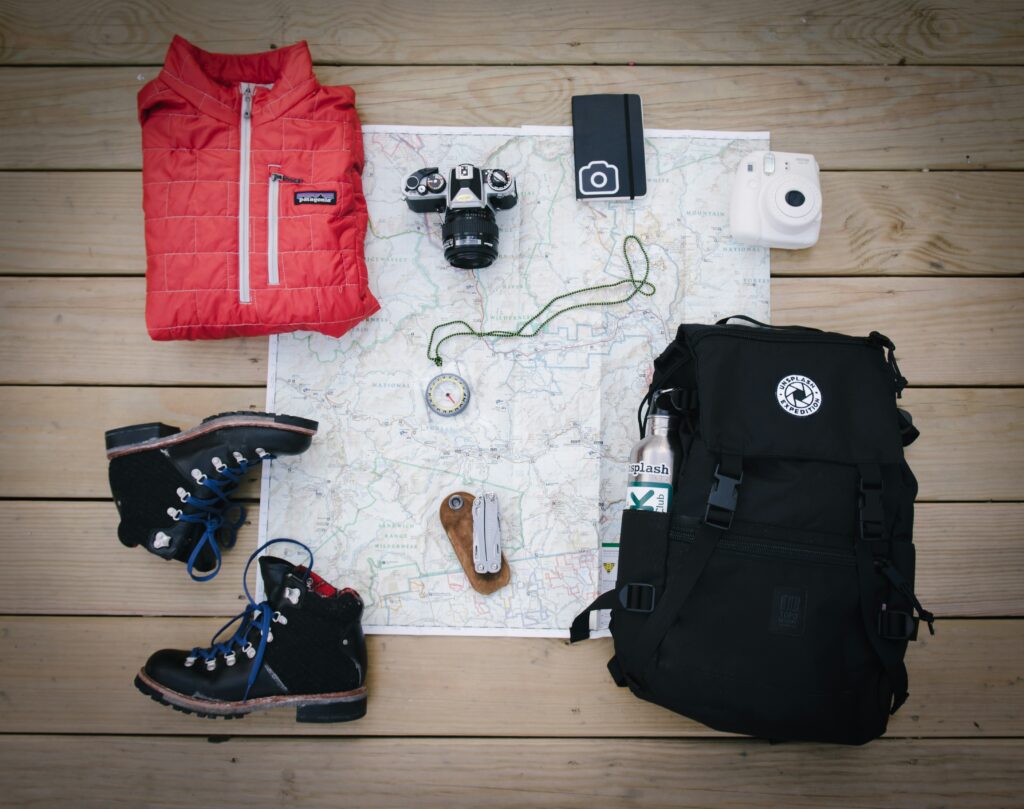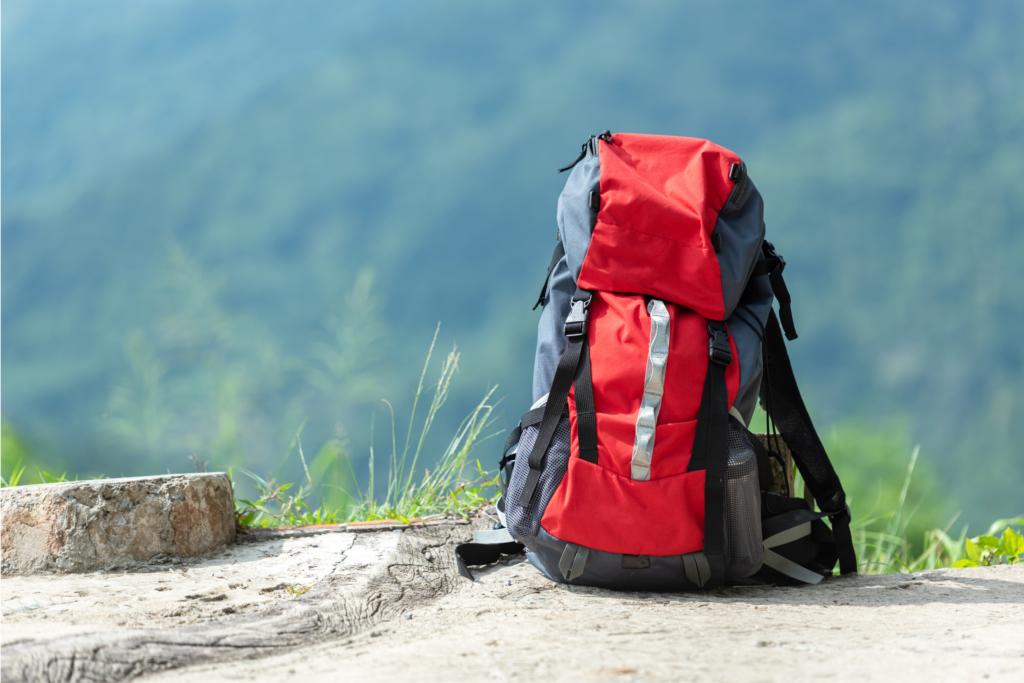How to Plan a Successful Hike

Hiking is one of my favorite ways to connect with nature, get some physical activity, and enjoy quality outdoor time with my family. Don’t get me wrong, I’ve gone on plenty of impromptu hikes, but proper planning is definitely key to making sure you have a safe and enjoyable hike. In this guide, I will walk you through the essential steps for planning a great hike.
Choose the Right Trail
Assess Your Fitness Level and Experience
When choosing a hiking trail, it’s important to match the trail’s difficulty with your fitness level and/or hiking experience. If you’re new to hiking, start with a shorter, easier trail to build your confidence and endurance. As you gain a little hiking experience, you can gradually tackle more challenging trails.

Research Trails
Smart Phone Apps
My favorite way to find local hiking trails is with the AllTrails app. This app shows you nearly every hiking trail in your area. You can filter the hikes by length, rating, and difficulty level. You can even filter by dog or kid friendly trails! You can also turn your phone into a GPS tracker and follow your trail so you don’t get lost. Track your location, pace, distance, and elevation.
When choosing a trail, make sure to read the trail descriptions, user reviews, and up-to-date information on trail conditions. You should also consider factors such as trail length, elevation gain, and terrain to ensure the trail matches your abilities.

The Best Hike in Every State
If you’re looking for a longer hike, I really enjoyed this article from Outside Magazine, which details The Best Hike in Every State.
Alpine scrambles and beachfront strolls; multi-day singletrack adventures and quick urban escapes; soaring trees and rolling sand dunes—every state in the country has something to offer intrepid hikers. So we rounded up a bucket-list-worthy, best-of-the-best guide.
Outside Magazine
National and State Parks
If you are lucky enough to live near one, National Parks and State Parks are known for being some of the most scenic places in the country. Plus, they’re usually ripe with hiking trails. You can search National Parks here. You can find the US State Parks here.

Consider the Weather and Season
Always check the weather forecast for the day of your hike and plan accordingly. Also, take into consideration seasonal trail conditions. Some trails might be muddy in the spring or covered in ice and snow in the winter.
Plan Your Route
Map Out Your Hike
Use maps and GPS tools to plan your hiking route. I always check the trail map posted at the start of a trailhead. I always snap a photo on my phone in case I need to reference it mid-hike. I also track my location on the trail using the AllTrails app on my phone. Don’t forget to plan for turnaround times and rest stops. Budgeting extra time for your hike will help to ensure you don’t overexert yourself and will allow you to enjoy the hike at a comfortable pace.

Understand Trail Regulations and Permits
Some trails require permits, so check if you need one in advance. Also, be sure to familiarize yourself with trail rules and regulations, and always respect wildlife and natural habitats. Following these guidelines ensures the preservation of the trails for future hikers!
Inform Others of Your Plan
Always share your hiking plans with a friend or family member. Provide them with details such as the trail name, route, and expected return time. Consider hiking with a buddy for added safety and companionship. This is a great opportunity to meet up with another Quilt Scout!
Pack the Essentials
Gear and Equipment
Make sure to wear appropriate footwear and clothing for the terrain and weather conditions. I suggest dressing in layers. Having the option to add or remove any layers will help keep you comfortable during your hike. It also never hurts to pack a lightweight rain jacket or poncho in the event of a surprise rain shower. If you expect cooler weather, pack a beanie and gloves. And always pack your sunscreen, no matter the season.

Food and Hydration
Be sure to pack sufficient water! Staying hydrated on the trail is crucial. You can pack a good ol’ water bottle or use a hydration system like a water bladder. Also, make sure to bring high-energy snacks (or meals depending on the duration of your hike) to keep your energy levels up! Check out “The Best Snacks to Bring on a Hike” for a list of ideas and easy recipes.

Safety and Emergency Items
At the very least, I recommend you carry a small first aid kit for any bumps or scrapes that may happen along the way. Navigation tools such as a map, compass, and smartphone/GPS device can help stay on track. If you’re hiking in a remote area, a personal locator beacon or satellite communicator may be a good idea.
During the Hike
Pace Yourself and Take Breaks
When it comes to enjoying a hike, it’s best to maintain a steady pace that allows you to appreciate your surroundings without overexerting yourself. Make sure to take regular breaks to rest and hydrate.
Stay on the Trail
Take care to follow trail markers and signs to stay on the designated path. Avoid shortcuts. Leaving the trail can leave you susceptible to getting lost. Plus, venturing off a designated trail can cause erosion to the surrounding area. And of course, always respect the environment. I like to follow the Leave No Trace Principles.

Watch the Weather
Depending on where you are hiking, weather can change quickly. If you sense a sudden shift in the weather, considering turning back. Getting caught in a storm is not only unpleasant, but can become dangerous.
Be Aware of Your Surroundings
While you’re admiring the scenery, don’t forget to keep an eye out for wildlife. It’s best to give wild animals their space. If you’re unsure, follow the Rule of Thumb: with your arm fully extended, you should be able to cover the entire animal with your thumb. Generally, this means that you are more than 25 yards away from most wildlife and 25 to 100 yards away from large animals.

Enjoy the Journey
Last, but not least, enjoy the journey and the company. Take in the scenery. Enjoy the fresh air and sunshine. And snap a pic of two.
Shop Badges



Pin it for Later




